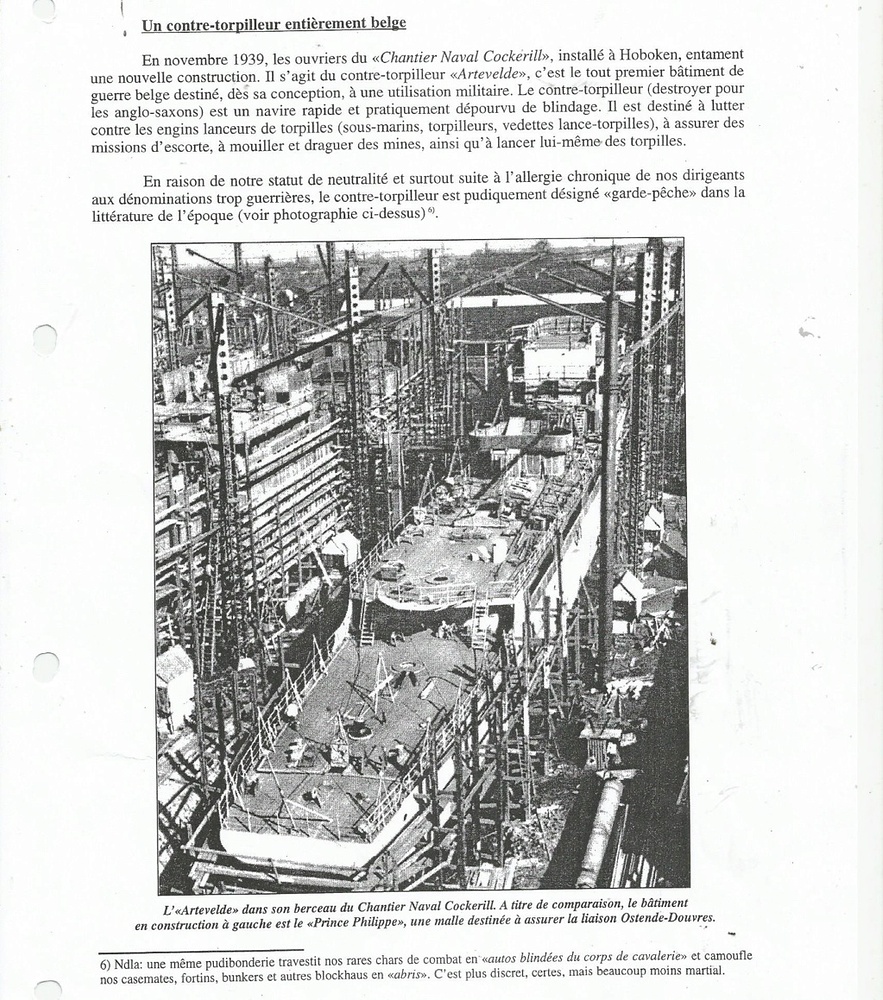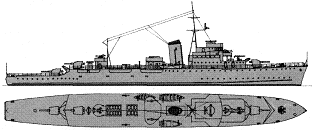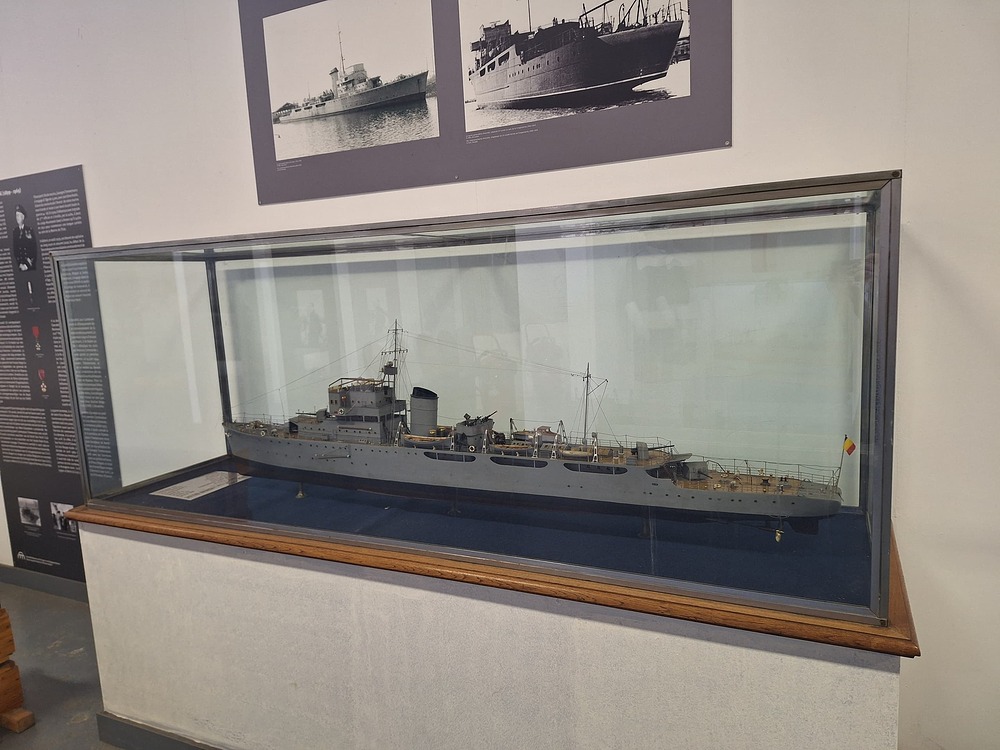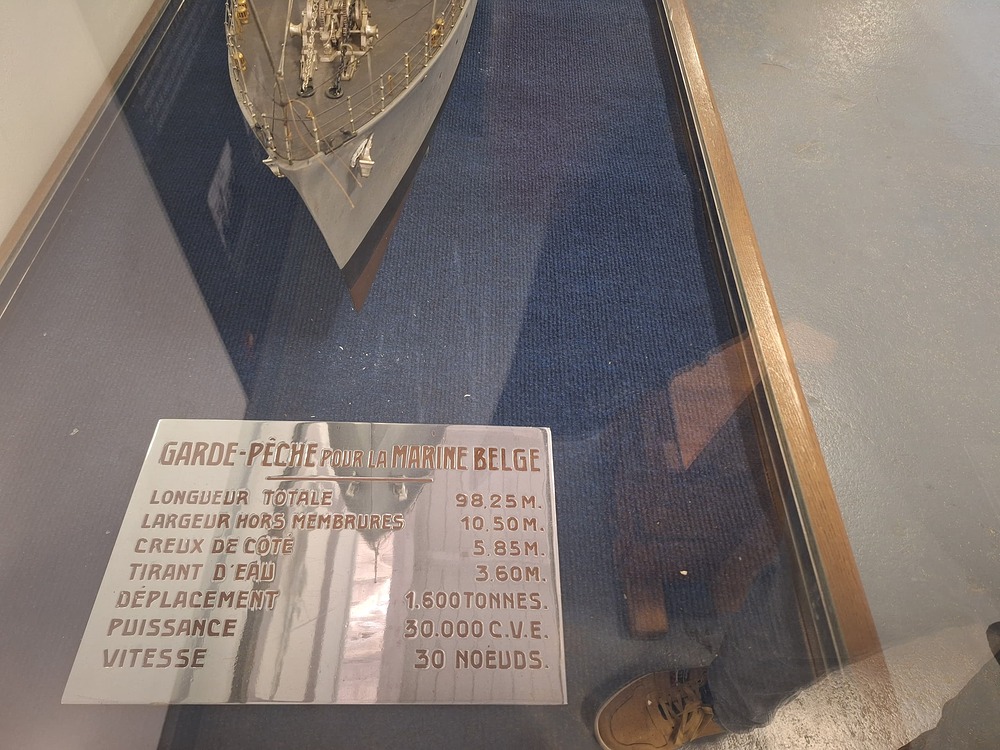- Yes
- No
- (independent) BeNeLux tree
- France: BeNeLux subtree
- other
- no/negative
TL;DR: Pre-war Belgian escort with 4×102 mm and mines — a mid-rank, gun-focused escort/minelayer for a BeNeLux line.
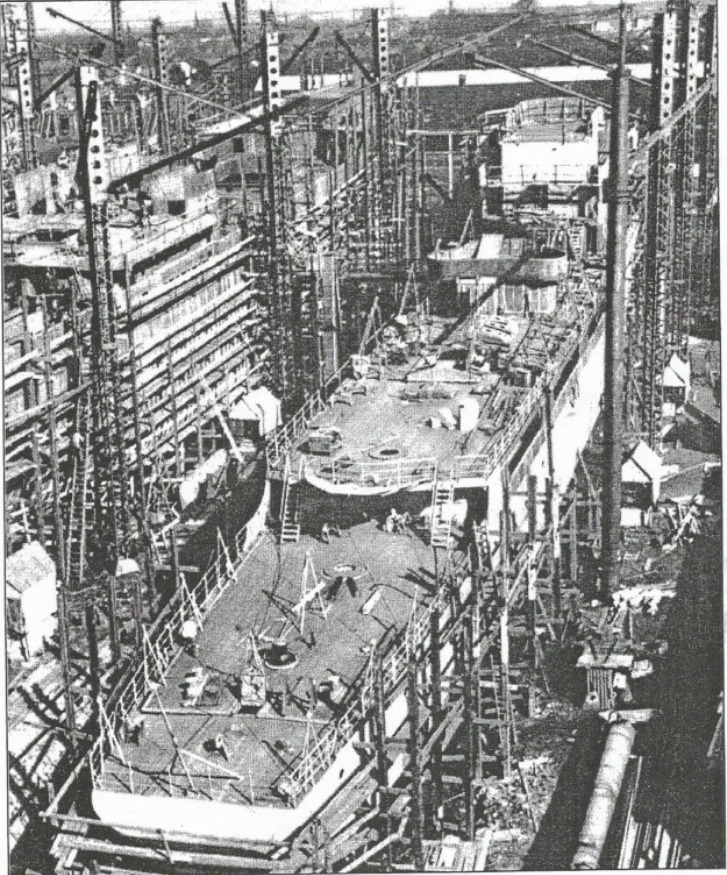
History
History
By the late 1930s, Belgium’s navy was modest and outdated, with only a handful of torpedo boats and patrol craft at its disposal. Neutrality had long defined Belgian defense policy, but the rising tensions in Europe made it clear that modern seagoing escorts would be needed both for coastal defense and for meeting international treaty obligations, particularly the 1882 Hague Convention, which required participating states to police fishing grounds with naval vessels.
In January 1938, the Belgian government authorized the construction of its first modern escort warship. Built at Cockerill Yards in Hoboken, the Artevelde was designed not as a destroyer — as sometimes mistakenly reported — but closer in concept to a French aviso or British sloop. She was to be fast, with a top speed of 30 knots, but armed primarily for anti-aircraft and escort duties rather than heavy surface combat.
Her planned main armament were the 4 x 102 mm dual-purpose guns. This caliber was unusual for Belgium, which had no domestic naval gun production in this class, relying more on domestic Cockerill 120mm guns. Archival evidence and comparative research suggest that the weapons were British 4-inch/45 QF Mk XVI, the standard dual-purpose mount of the Royal Navy at the time (also adopted by the Dutch), but redesigned to be 4 single-mounts. Belgium had already sourced its Parsons turbines and Babcock & Wilcox boiler technology from the UK, making a British supply of naval artillery plausible. These guns, however, never reached Belgium, and it remains uncertain whether they were even delivered before the German invasion.
The ship itself was ambitious for a country with such a small fleet. Over 650 tons of steel and 375,000 rivets were used in her construction, and she was fitted with facilities rarely seen on escorts: a royal suite, including a bedroom, reception salon, and offices for the King and his entourage. This reflected Belgium’s intent for the vessel to serve both as a symbolic flagship and a practical escort.
However, the German invasion of 10 May 1940 cut short the project. The Artevelde, still incomplete on the slipway, was captured intact. Belgian engineers had no time to sabotage her hull. The Germans had her towed to Wilton-Fijenoord shipyards in Schiedam, where she was eventually completed in 1943 using German equipment. In this guise she became K4 Lorelei, serving the Kriegsmarine as an escort and artillery training ship.
The Artevelde was Belgium’s first attempt at building a modern escort fleet, bridging the gap between a symbolic navy and a functional force. Her planned design showed Belgium’s reliance on British technology and weapons imports, her dual role as escort and state vessel, and the limits imposed by the outbreak of war.
Had she entered service as designed, she would have been comparable to French avisos coloniaux or British Black Swan–class sloops — fast, maneuverable, and equipped for anti-aircraft and escort duties. Instead, her history became tied to occupation, repurposing, and eventual post-war service in another role.
Classification — Contemporary characteristics and armament align with an aviso/escort, which differs from a French-style contre-torpilleur (destroyer leader).
Specifications (Belgian plan, 1939)
Type: Escort / aviso (planned)
Builder: Cockerill (Hoboken), Hull 686
Dimensions: 98.43 m (pp 92 m) × 10.54 m × 3.65 m
Displacement: 1,640 t (light); 2,270 t (full load)
Propulsion: 2 Satz-Parsons steam turbines (~30,000 hp); 2 shafts; 2.6 m screws
Boilers: Cockerill–Babcock & Wilcox (68 t/h each; ~34 kg/cm²)
Speed/Range: ~30 kn max; 2,100 nm at 13 kn
Crew (planned): ~120 (12 officers + 108 men)
Electronics/gear (planned): 2 searchlights, fire-control rangefinder, ammo hoists; magazine flood/spray systems; smoke apparatus; 2 paravanesArmament (1939 plans):
• 4 × 102 mm AA guns (single mounts)
• 1 × 2 × 20 mm AA
• Mines: up to 50Note: Some secondary sources propose alternative planned fits (notably British 4″/45 QF Mk XVI twin mounts, as in use in the Netherlands); the above matches Belgian archival descriptions of the pre-war specification (Pignolet, 1939).
Place in War Thunder
Role: Mid-rank escort/minelayer for Coastal forces with accurate 102 mm fire and modest AA; mine gameplay.
Rank/BR (suggested): Rank III-IV, BR ~3.X.
Nation: France (BeNeLux subtree) or BeNeLux independent line; possible as premium/event vehicle.
Pictures & Diagrams
Diagrams
Planned Belgian layout (artist’s reconstruction based on specs)
Sources
Spoiler
- Belgian Navy Forum. (n.d.). Artevelde (discussion thread). http://www.belgian-navy.be/t1176-artevelde
- Belgian Navy Forum. (n.d.). Artevelde – journal de bord (K-4). http://www.belgian-navy.be/t10137-artevelde-journal-de-bord-comme-k-4
- Marine Belge. (n.d.). Artevelde. https://www.marinebelge.be/artevelde.html
- Navypedia. (n.d.). ARTEVELDE frigate (1943/1945) – Belgium. https://www.navypedia.org/ships/belgium/be_es_artevelde.htm
- Pignolet, H. (1939). L’Artevelde, navires de légendes (Parts I–II). Neptunus, (289–290). Oostende.
- Wikipedia contributors. (n.d.). Artevelde. In Wikipedia, The Free Encyclopedia. https://fr.wikipedia.org/wiki/Artevelde
- Navypedia. (n.d.). ARTEVELDE gunboat (1939). Retrieved August 23, 2025, from navypedia.org
- Wikipedia (de). (n.d.). Kleines Kanonenboot „Lorelei“ (K 4). Retrieved August 23, 2025
- NavWeaps. (2025). Britain 4″/45 (10.2 cm) QF HA Marks XVI, XVII, XVIII & XXI. from navweaps.com.
- NetherlandsNavy.nl. (n.d.). 4 inch Mark XVI. from netherlandsnavy.nl
